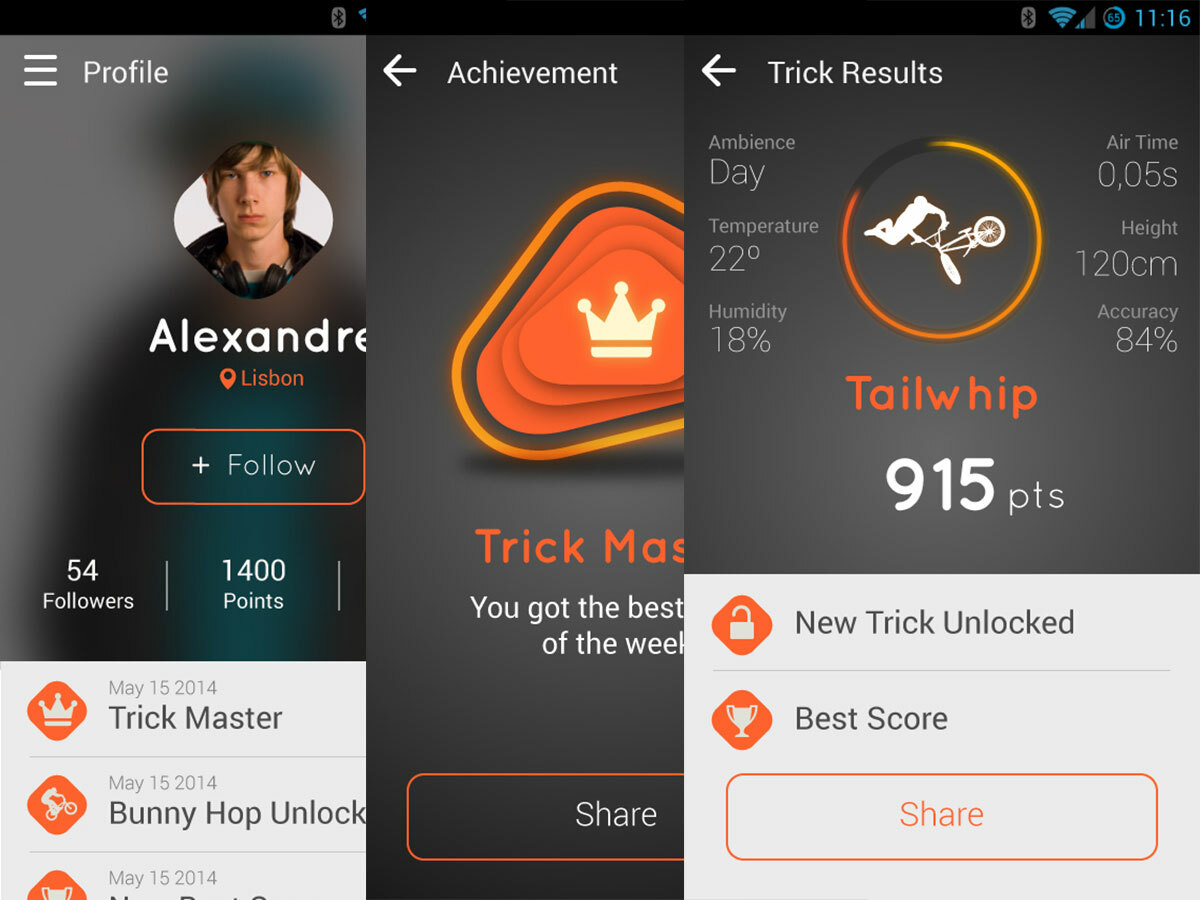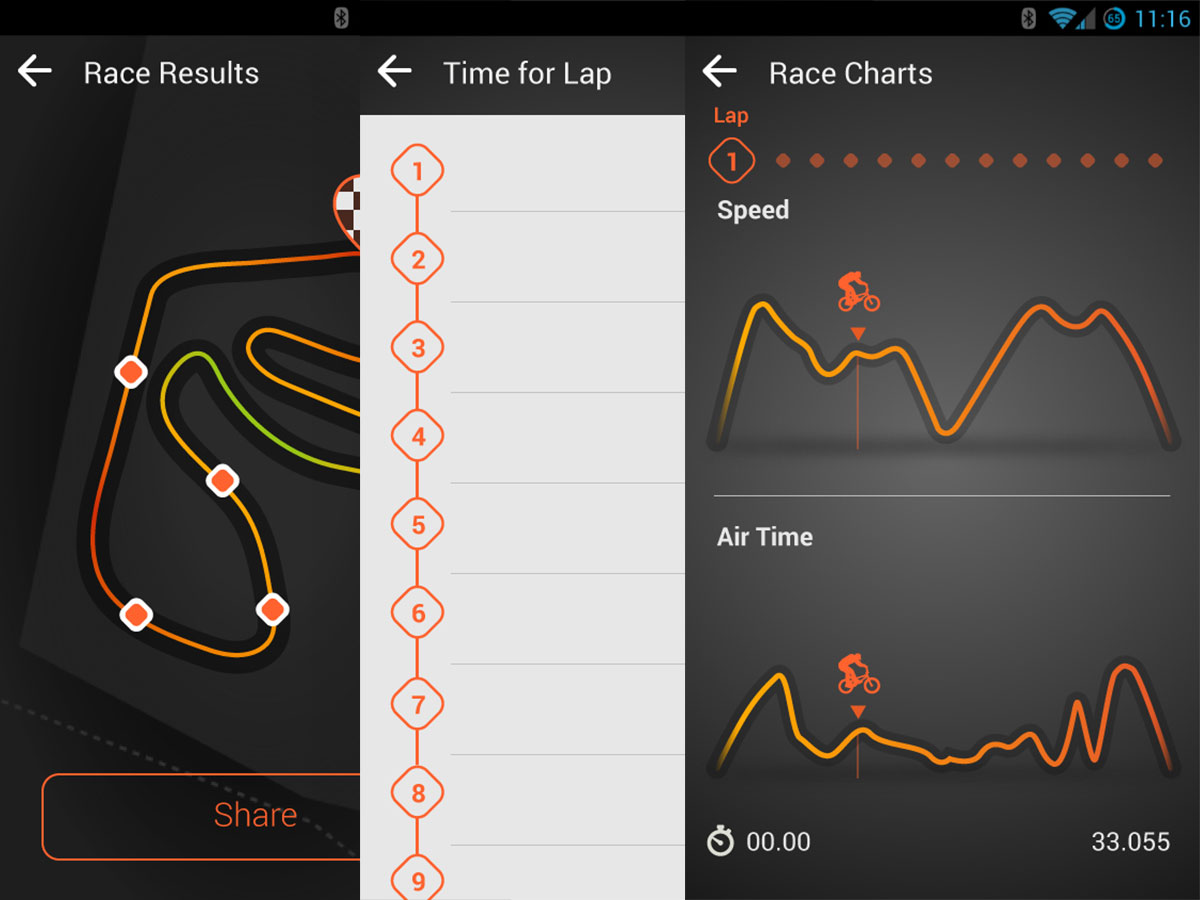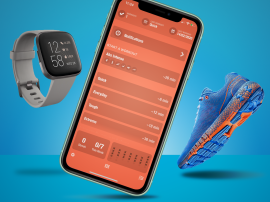Meet Iddo, the Fitbit of action sports
...or the Strava of gnarly tricks, if you prefer

“Doing a trick is like doing a painting – it’s like a Van Gogh. But you cannot keep a record of it. I thought, these guys do amazing tricks – let’s do something for that.”
This thinking led Portugal-based engineer and old-school BMX enthusiast Rui Sousa Campos to create Iddo (pronounced ‘I do’, as in ‘I am what I do’), a sensor that bolts to your BMX bike and maps everything you get up to on it. It captures where you’ve gone, how you’ve moved and the tricks you’ve pulled, while its companion app scores those tricks and records your BMX races. The associated social network lets you share stats with like-minded riders of bikes with tiny wheels.
At least, that’s the theory. Right now the Iddo sensor is at prototype stage, and the app is in development, but there are already riders beta testing it to help Campos’ product prototyping startup Coppr make it better. (Coppr has also been accepted on to the Microsoft Ventures Accelerator in London, which will assist with the development of the business.)
It seems slightly crazy no-one’s had the idea before. Given our propensity to track everything from our jogs to our sleep, and to share it all afterwards, of course there should be a device that can measure the 360 you’ve just perfectly executed or the track time you’ve just posted, and of course there should be some way of making them known to the outside world.
That suggests Iddo might just work. But isn’t BMXing too niche? And couldn’t an app like Airtime on a decent smartphone do the same job?
The sensor
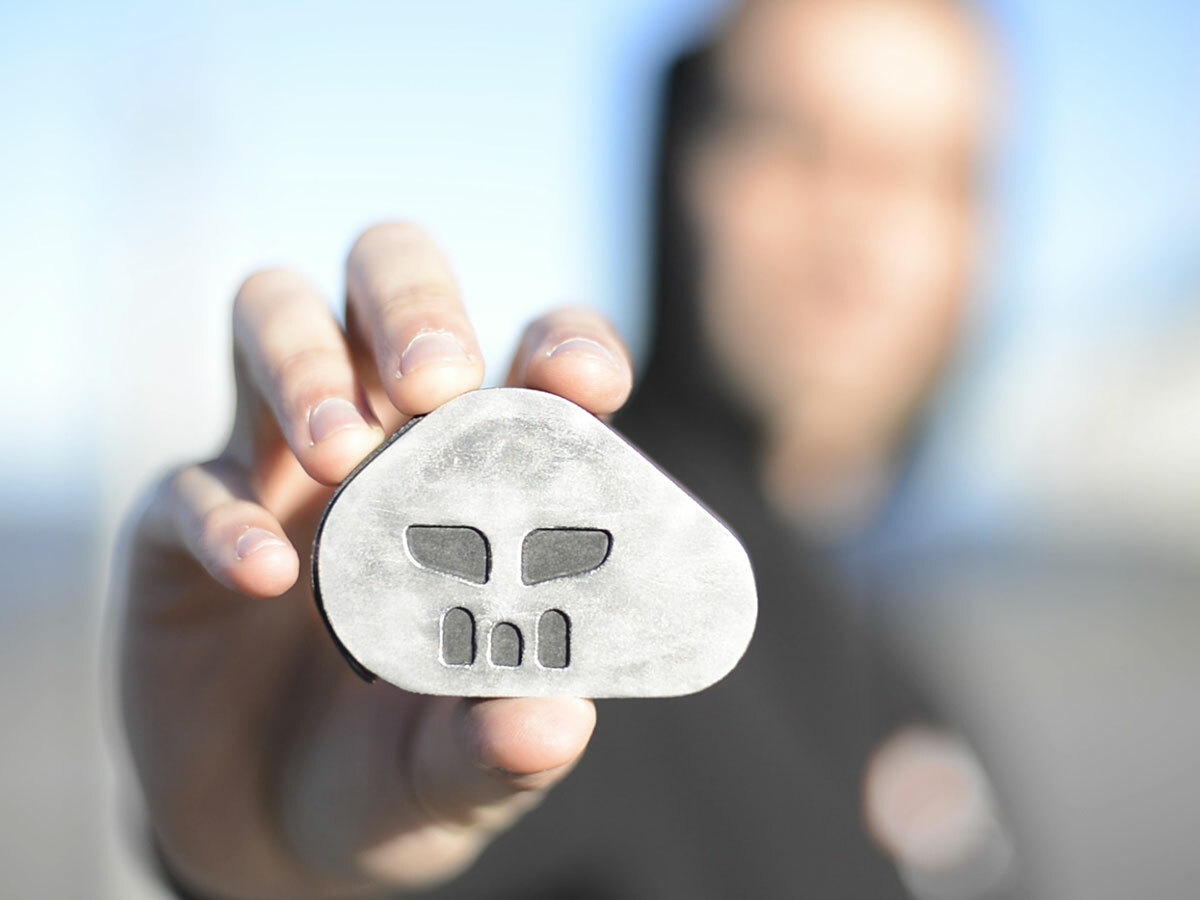
Campos says Coppr’s approach is rider-first: Iddo doesn’t fudge feedback by applying a one-size-fits-all algorithm to a single parameter of data as a basic activity tracker does, but instead records as many strands of data as possible, and has each contribute to the detail of the picture they provide to the rider.
One crucial component of the Iddo sensor is an altimeter that’s accurate to 10cm (if your smartphone has one at all, it probably has a margin of error of around 30cm). Knowing how massive a jump was in part determines the score the algorithm assigns to it, so Iddo has to get it right.
Also included are temperature, ambient light and humidity sensors. “They allow you to more accurately track what’s happened. You can see, OK, this BMX race was on a rough day, there was a lot of humidity, or the temperature was low or high – they can compare their results.” (Weather conditions impact upon your trick’s score – the other metrics are height, accuracy and ‘fluidity’.)
Another key factor is that Iddo is attached to your bike rather than nestling in your pocket or sitting on your wrist. This is germain to the accuracy of the trick-mapping algorithms Coppr has developed. “Every person is different,” says Campos. “If you don’t map the person correctly, you won’t be able to match the tricks. We know that it was a 360 or a table. We know it was a backflip or a front flip." In short, a bike is a known, inflexible quantity – and your pliable, twisting thighs are not.
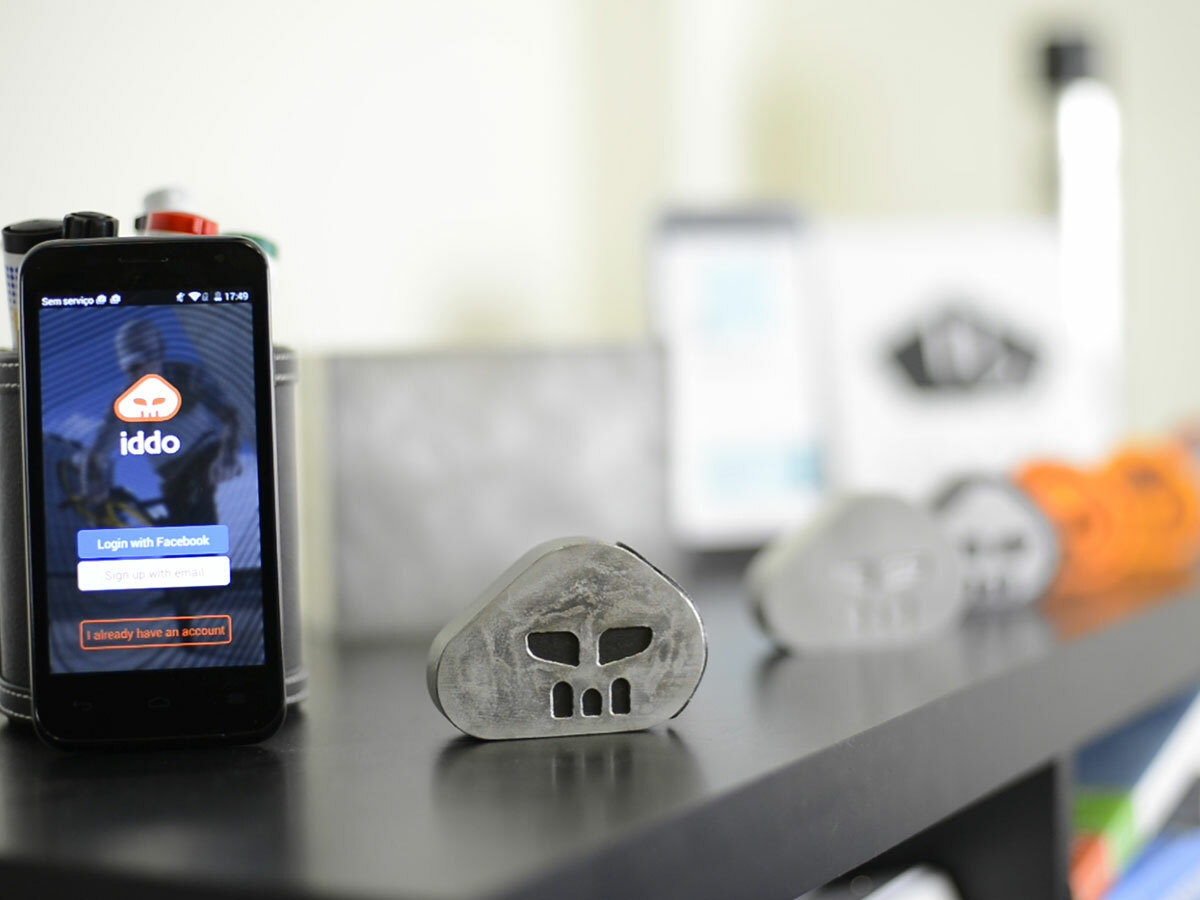
The rest of the specification is more familiar. Inside the weather-sealed aluminium shell (“We started with plastic, but we have a team of BMXers who showed it wasn’t going to last”) there’s a gyrometer, accelerometer and magnetometer to map movement, an ARM Cortex M4-based processor to run the trick-crunching algorithms and 1GB of Flash storage to capture movement data. The sensor will sync with the app in real time via Bluetooth, and battery life is currently 10 hours (although Campos reckons hardware and software optimisation will eventually up that to two or three days). There are GPS, GLONASS and BeiDou (the Chinese GPS variant) sensors, too, allowing riders to record race and training data, and letting freestyle riders see where other Iddo users have performed tricks.
If anything, the danger is that Iddo knows too much. Most cycle computers don’t bother with how nice a day it is, so it’ll be interesting to see if Coppr can relate all that data to riders in digestible, actionable chunks. That’s where the app comes in.
The app
At its core the app is intended to function similarly to running and cycling phenomenon Strava, gamifying your activity to push you to get better. It’ll record your rides, and rider profiles will allow you to benchmark your best racing times against the community. Where it’ll go further is in letting you compare the awesomeness of your tricks, too.
As with Strava, creating a community of data-sharing riders is essential to the success of Iddo. Campos is going to try every strategy in the book to get the app used and users engaged, including building in unlockable achievements, instant messaging and Facebook sharing.
The app functionality that really excites him, though, is audio. “Imagine some guy’s going along the street, and he has his earphones on. He’s going to hear something like ’10m to your right a guy did a bunny hop, and it’s the top bunny hop. Do you want to challenge that?’
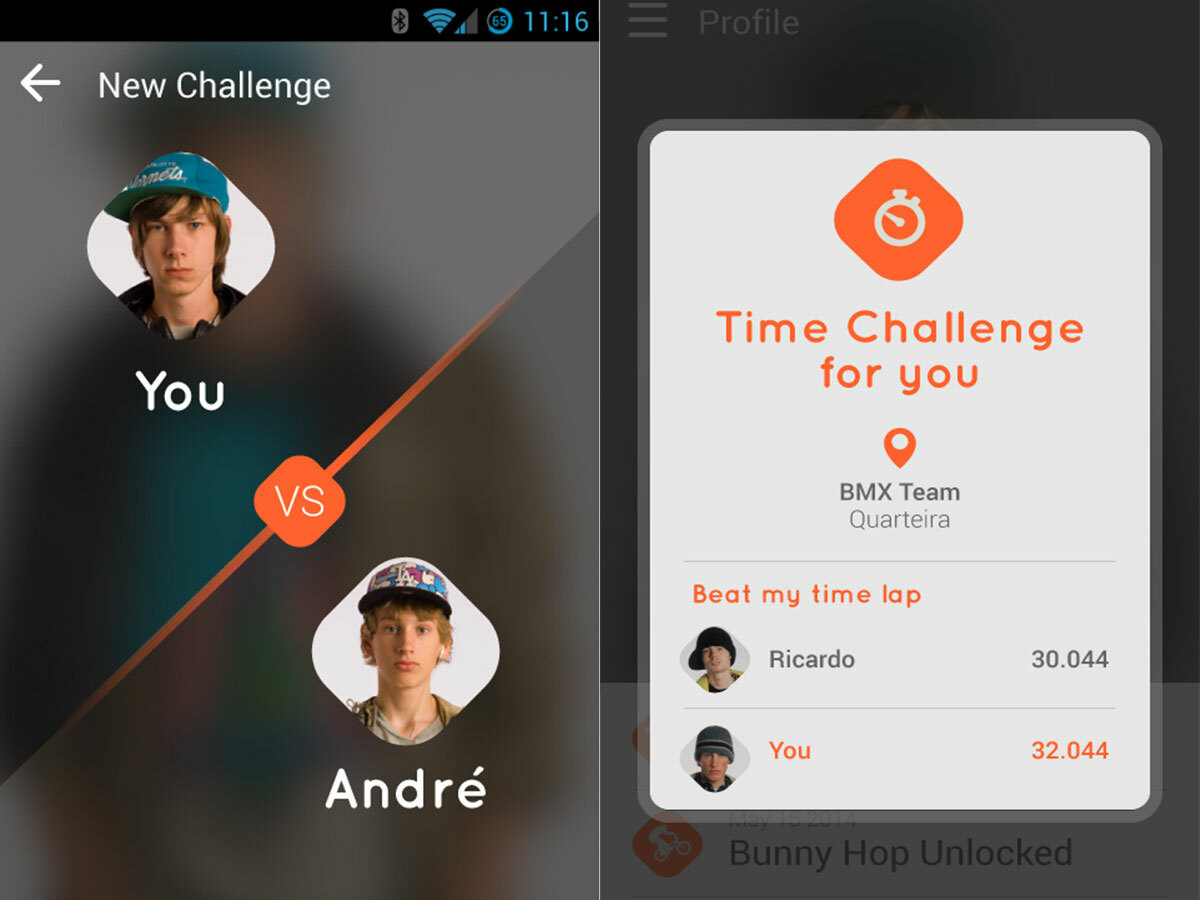
“Doing BMX racing he can choose a previous friend to race against. He’s going to do what we call the ghost challenge.” Coppr claim the ghost challenge will also allow you to race your past times, giving real-time feedback as you ride, and digging into the data to tell you whether you’re better off taking air over a double jump or keeping the bike on the ground. “This doesn’t exist in the market – nothing can map this kind of behaviour. For the guys into BMX racing it’s going to be a killer feature,” says Campos.
Yeah but… BMXing?
OK, so it’s not the ‘80s; 2015 is hardly a vintage year for BMXing. But the potential for the device beyond BMX isn’t lost on Coppr. It already has 30 other sports on the simmer, including surfing, downhill mountain biking, skiing and motocross. Each would demand their own bespoke algorithms, and strands on Iddo’s app – but each would open up Iddo’s potential to a much wider audience.
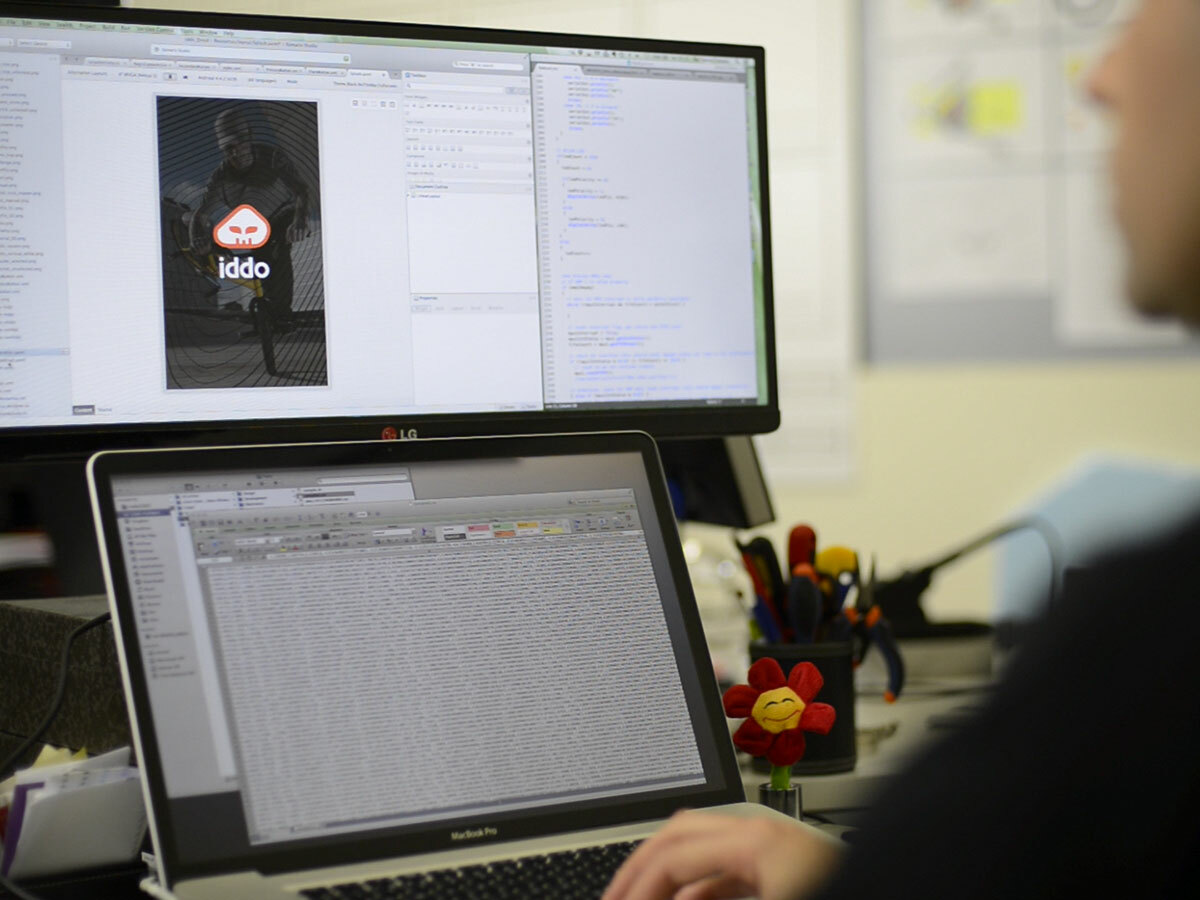
Coppr’s set-up is all about rapid prototyping – the company’s ultimate goal is to develop products for other startups – so development can happen constantly. Having gained experience of working with hardware and algorithms in his previous job (which involved making mind-controlled robots), Campos created Coppr in May 2014, and the Iddo hardware was built using off-the-shelf kit: a Prusa i3 Hephestos open-source 3D printer, a Cirqoid circuit etching machine and a T-962 PCB oven. If something’s wrong with one Iddo, they simply print out another.
For now, the BMX-centric Iddo is looking for €40,000 of funding on Indiegogo (UPDATE 23/3: the Indiegogo page has been closed to allow Coppr to add features and reposition Iddo as an ‘extreme sports sensor’). Coppr will be asking €199 for a sensor with premium app access, and all being well you’ll receive it this September.
Could Iddo become as ubiquitous for action sports as GoPro cameras have? €199 isn’t impulse buy money, but the functionality it’s promising is unique and interesting – so there’s every reason to hope so.
